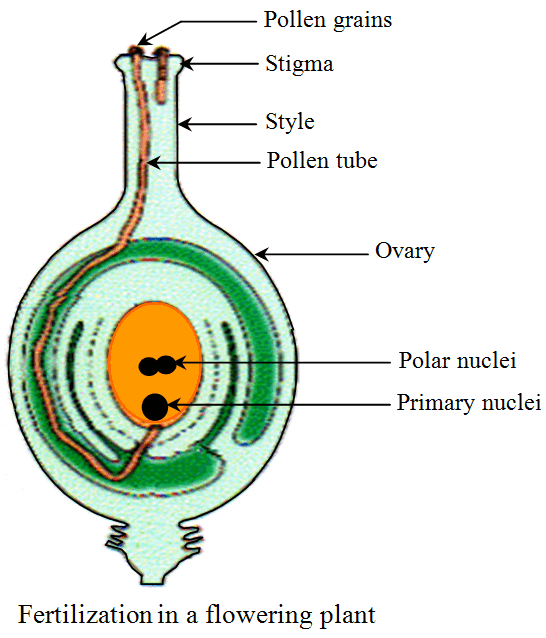Fertilization
The second step in the formation of seeds is fertilization. Fertilization may be defined as the fusion of male gametes (pollens) with the female gametes (ovum) to form zygote, during the sexual reproduction.
We have already discussed that the formation of seeds in plants starts with the process of pollination. In pollination the pollen grains which are liberated by anthers stick to the stigmas and form pollen tube. The pollen tube carries two male nuclei. The pollen grain remains over the surface of the stigma while the pollen tube travels through the style and reaches to the ovule present in the ovary. Then the pollen tube enters the ovule where one male nucleus combines with the primary nucleus of the ovule to form zygote. The second male nucleus fuses with the two polar nuclei present in the embryo sac to form endosperm.

Ultimately the zygote develops in embryo and then into seed, while the ovary develops into fruit. During the development of seed the various parts of flower i.e. stamens, sepals and petal fall down.
Double Fertilization
The process by which the two male nuclei present in the pollen tube fuse with two different types of nuclei (one primary nucleus and two polar nuclei) of same ovule to produce two different structures is called double fertilization.
Test Your Understanding and Answer These Questions:
